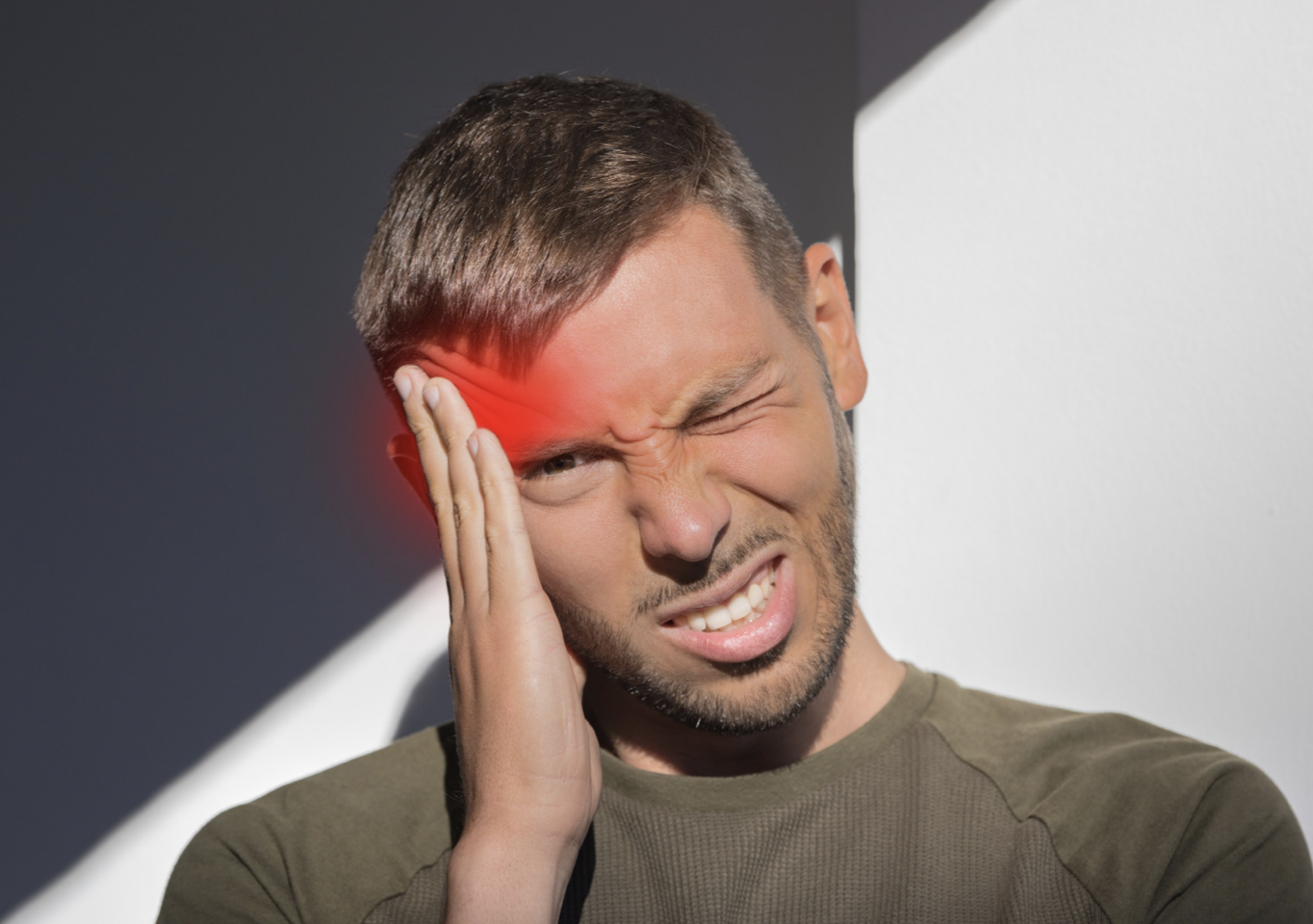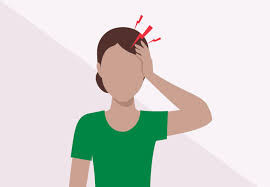Definisi
Nyeri kepala klaster atau cluster headache (CH) adalah jenis nyeri kepala yang terjadi pada satu sisi kepala dan nyeri pada bagian mata. Nyeri kepala klaster merupakan jenis nyeri kepala yang sangat intens (nyeri hebat) dan memiliki pola tertentu. Umumnya, penderita nyeri kepala klaster terbangun di malam hari karena nyeri. Serangan nyeri kepala dapat terjadi selama beberapa bulan hingga minggu, diikuti dengan periode 'remisi' ketika nyeri kepala tidak dirasakan untuk sementara waktu. Walaupun intens, nyeri kepala klaster tidak mengancam nyawa. Terapi nyeri kepala klaster berfungsi untuk mengatasi nyeri kepala agar tidak berlangsung lama dan tidak terlalu parah. Nyeri kepala klaster merupakan bagian dari nyeri kepala primer, yang berarti tidak disebabkan oleh penyebab lain, seperti infeksi, trauma, atau pecahnya pembuluh darah.
Di Asia, nyeri kepala klaster dialami oleh 3% total penderita nyeri kepala. Nyeri kepala klaster dapat dialami oleh berbagai usia, dengan puncak kejadian pada usia 20-29 tahun dan lebih sering terjadi pada laki-laki.
Nyeri kepala klaster dapat dibagi menjadi dua jenis berdasarkan durasi munculnya nyeri kepala, yaitu:
- Nyeri kepala klaster episodik, ditandai dengan dua episode nyeri kepala klaster dengan durasi 7 hari–1 tahun disertai dengan periode bebas nyeri kepala selama ≥1 bulan.
- Nyeri kepala klaster kronik, ditandai dengan nyeri kepala klaster yang terjadi ≥1 tahun terus menerus tanpa periode bebas nyeri, atau periode bebas nyeri < 1 bulan.
Penyebab
Mekanisme yang menyebabkan nyeri kepala klaster belum diketahui secara pasti. Nyeri kepala klaster diduga berhubungan dengan saraf trigeminus, salah satu cabang saraf otak yang mempersarafi area wajah. Salah satu hipotesis menyatakan bahwa beberapa faktor pencetus menyebabkan aktifnya persarafan yang diinterpretasikan otak sebagai nyeri. Hal ini menyebabkan adanya sensasi nyeri kepala sebelah yang disertai dengan hidung dan mata berair.
Faktor-faktor pencetus tersebut antara lain:
- Alkohol
- Perubahan cuaca
- Bau tajam
Tidak seperti migrain atau tension type headache, nyeri kepala tipe klaster tidak berhubungan dengan perubahan hormon maupun stres.
Faktor Risiko
Faktor yang meningkatkan risiko terjadinya nyeri kepala klaster adalah:
- Jenis kelamin. Laki-laki lebih sering mengalami nyeri kepala klaster dibandingkan perempuan.
- Usia. Nyeri kepala klaster umumnya dialami oleh usia produktif antara 20–50 tahun, namun nyeri kepala dapat terjadi di berbagai usia.
- Merokok. Beberapa orang yang mengalami nyeri kepala klaster merupakan perokok, namun berhenti merokok tidak berdampak pada nyeri kepala.
- Alkohol. Alkohol meningkatkan risiko untuk mengalami serangan nyeri kepala.
- Riwayat Keluarga. Memiliki orang tua atau saudara yang mengalami nyeri kepala klaster meningkatkan risiko untuk mengalaminya juga.
Gejala
Nyeri kepala klaster dapat menyerang secara tiba-tiba tanpa gejala pendahulu, walaupun sebagian orang merasakan 'aura' atau mual sebelum nyeri kepala muncul. Gejala dari nyeri kepala klaster adalah:
- Nyeri kepala hebat di satu sisi kepala, sekitar mata, yang dapat menjalar ke pipi, dahi, telinga,dan leher. Lokasi ini umumnya selalu sama di setiap episodenya.
- Nyeri hanya pada satu sisi.
- Tidak berdenyut.
- Mata berair.
- Mata merah pada sisi yang nyeri.
- Hidung tersumbat atau berair.
- Berkeringat pada salah satu sisi kepala yang mengalami nyeri.
- Kulit pucat atau kemerahan (flushing).
- Pembengkakan pada sisi kepala yang terkena.
- Kelopak mata turun pada sisi kepala yang terkena.
- Waktu munculnya memiliki pola yang sama dalam beberapa hari berturut-turut.
Diagnosis
Nyeri kepala dapat menjadi suatu pertanda penyakit lain. Dalam menegakkan nyeri kepala klaster, dokter akan menanyakan durasi nyeri kepala, lokasi nyeri kepala, kualitas nyeri kepala, dan pola munculnya nyeri kepala. Dokter juga akan memastikan bahwa nyeri kepala ini bukan nyeri kepala yang mengancam jiwa dengan menyingkirkan kemungkinan-kemungkinan lain seperti stroke, perdarahan kepala, dan infeksi. Untuk menegakkan nyeri kepala klaster, nyeri kepala yang Anda rasakan harus meliputi beberapa kriteria yang ditetapkan oleh The International Classification of Headache Disorder (ICHD-3), yaitu:
- Minimal terdapat 5 serangan yang memenuhi kriteria B dan C
- Nyeri berat atau sangat berat pada satu sisi kepala di daerah sekitar mata (orbita dan supraorbita) selama 15-180 menit
- Dengan minimal salah satu gejala berikut pada sisi nyeri kepala:
- Mata merah dan/atau berair
- Hidung tersumbat dan/atau berair
- Kelopak mata bengkak
- Keringat pada dahi dan wajah
- Wajah kemerahan
- Rasa penuh di telinga
- Pupil mengecil (miosis) atau turunnya kelopak mata (ptosis)
- Agitasi atau gaduh gelisah
- Frekuensi serangan antara satu kali setiap dua hari dan delapan kali per hari selama lebih dari setengah periode aktif nyeri kepala
- Tidak ada diagnosis lain yang sesuai
Setelah melakukan tanya jawab, dokter perlu memastikan bahwa tidak ada penyebab lain yang menyebabkan nyeri kepala tersebut. Dokter akan melakukan pemeriksaan fisik neurologi (saraf) dengan memeriksa adanya kelemahan pada wajah, tangan, serta kaki atau adanya gangguan penglihatan, refleks pada tangan dan kaki, dan lain-lain. Jika dibutuhkan, dokter dapat melakukan pemeriksaan pencitraan seperti MRI atau CT scan.
Tata Laksana
Pada kondisi serangan nyeri kepala, dokter akan memberikan beberapa pilihan terapi berikut:
- Oksigen. Menghirup oksigen bertekanan tinggi selama 15 menit dapat meringankan serangan nyeri kepala. Prosedur ini cukup murah dan aman. Anda dapat memperoleh terapi ini di instalasi unit gawat darurat atau fasilitas kesehatan terdekat.
- Triptan. Triptan merupakan obat yang digunakan untuk pengobatan nyeri kepala klaster. Obat ini dapat diberikan dengan cara disuntik atau semprot hidung. Triptan merupakan obat yang pahit sehingga dapat menyebabkan rasa tidak nyaman di lidah. Konsultasikan penggunaan obat ini dengan dokter Anda
- Dihidroergotamin. Merupakan obat yang disuntikkan dan efektif menurunkan nyeri kepala. Konsultasikan penggunaan obat ini dengan dokter Anda.
Jika kondisi tidak membaik dengan terapi, dokter akan menyarankan untuk melakukan operasi atau stimulasi saraf otak. Namun, keuntungan jangka panjang dari prosedur-prosedur tersebut perlu diteliti lebih lanjut.
Komplikasi
Nyeri kepala klaster umumnya tidak menyebabkan komplikasi yang mengancam jiwa. Namun, nyeri kepala klaster bisa sangat mengganggu kehidupan sehari-hari hingga menyebabkan depresi. Dukungan dari keluarga dan orang-orang terdekat merupakan kunci utama bagi penderita nyeri kepala klaster untuk dapat mengatasi kondisinya.
Pencegahan
Terdapat beberapa langkah untuk mencegah timbulnya nyeri kepala klaster, antara lain:
- Memperbaiki jadwal tidur. Tidur dengan jadwal yang teratur dan durasi yang cukup dapat mencegah serangan nyeri kepala.
- Menghindari konsumsi alkohol. Alkohol dapat menjadi pencetus munculnya serangan nyeri kepala klaster.
- Batasi paparan bau menyengat seperti parfum, lem, dan lain-lain.
- Hindari tembakau.
- Atur cahaya dan suara di rumah Anda sehingga tidak terlalu silau dan tidak terlalu keras agar tidak mencetus timbulnya nyeri kepala klaster.
Dokter Anda dapat memberikan obat-obatan untuk mencegah timbulnya serangan nyeri kepala seperti kortikosteroid, litium, dan penyekat reseptor beta jika sesuai dengan indikasi. Konsultasikan pilihan ini kepada dokter Anda.
Kapan harus ke dokter?
Segera periksakan kondisi Anda ke fasilitas kesehatan terdekat jika Anda mengalami gejala-gejala di atas dan Anda merasa terganggu dengan kondisi tersebut. Nyeri kepala, sekalipun berat, terkadang tidak disebabkan oleh penyakit lain. Namun, nyeri kepala juga dapat mengindikasikan penyakit yang lebih serius, seperti perdarahan kepala, infeksi, hingga tumor.
Jika Anda merasa terdapat perubahan pada nyeri kepala yang biasa Anda rasakan atau mengalami salah satu gejala di bawah ini, segera periksakan diri Anda ke dokter.
- Nyeri kepala tiba-tiba, sangat berat, seperti 'petir'
- Nyeri kepala disertai demam, mual dan muntah, leher yang kaku, kejang, bingung, kelemahan tangan atau kaki dapat mengindikasikan penyakit lain seperti meningitis atau tumor otak
- Nyeri kepala setelah benturan pada kepala, walaupun benturan terasa ringan
- Nyeri kepala yang berubah seperti semakin memberat, semakin nyeri, atau semakin sering
Ingin tahu informasi seputar penyakit lainnya? Anda bisa kunjungi laman ini ya!
- dr Nadia Opmalina
Mayo Clinic Staff. (2021). Cluster Headache. MayoClinic. Retrieved from: https://www.mayoclinic.org/diseases-conditions/cluster-headache/diagnosis-treatment/drc-20352084
Aninditha T, Wiratman W. (2017). Buku ajar neurologi. Edisi ke-1. Jakarta: Penerbit Kedokteran Indonesia.
Sjahrir H, Machfoed M, Suharjanti I, Basir H, et al. (2013). Konsensus nasional IV Kelompok Studi Nyeri Kepala Perhimpunan Dokter Spesialis Saraf Indonesia: diagnostik dan penatalaksanaan nyeri kepala. Surabaya: Pusat Penerbitan dan Percetakan UNAIR.
Kandel SA, Mandiga P. Cluster Headache. [Updated 2021 Jun 29]. In: StatPearls [Internet]. Treasure Island (FL): StatPearls Publishing; 2021 Jan-. Available from: https://www.ncbi.nlm.nih.gov/books/NBK544241/
Blanda M. (2021). Cluster Headache. Medscape. Avaialable from: https://emedicine.medscape.com/article/1142459-overview












